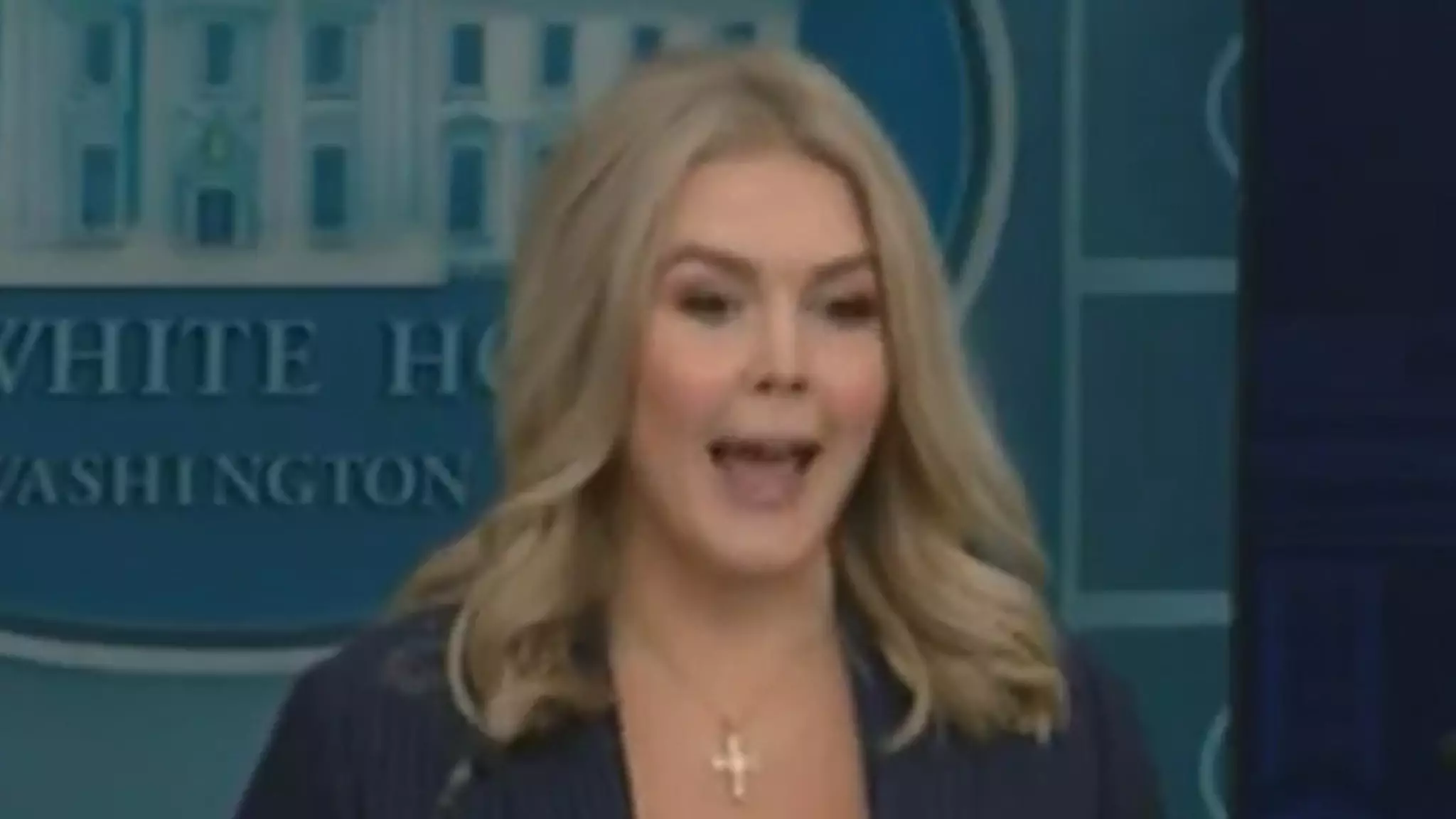In recent months, media dynamics have shifted significantly due to the unpredictable nature of political discourse, particularly under the leadership of former President Trump. Reports indicate a growing tension between the administration and various news outlets, rooted not only in political disagreements but also in the administration’s expectations regarding language and representation. The situation regarding the Associated Press (AP) serves as a pertinent case study reflecting an administration that is keen on framing narratives to suit its agenda and the implications of such an approach for journalistic freedom.
Karoline Leavitt, the White House Press Secretary, has made headlines with her audacious proclamations regarding the administration’s communication strategy. In a recent briefing, she declared a zero-tolerance policy for what the administration perceives as misinformation, suggesting that this includes not adhering to the preferred nomenclature for geographical phrases, such as the Gulf of Mexico—a designation that has reportedly been rebranded as the “Gulf of America.” The historical context of such geographical names holds significant importance, and the insistence by Leavitt to enforce compliance reveals a concerning trend towards government-sanctioned messaging.
Leavitt’s statements further inferred that noncompliance may lead to punitive repercussions for media outlets. This raises serious questions about the boundaries of First Amendment rights and the role of the press as an independent entity. Are reporters now compelled to adhere to governmental vocabulary to maintain access and credibility?
The Broader Implications
The incident involving the AP is emblematic of a larger phenomenon where the administration’s aggressive stance on controlling language underscores a looming threat to freedoms traditionally safeguarded in democratic societies. Critics might describe the administration’s approach as petty yet harmful, suggesting that this constitutes an indirect method of censorship—a tactic that could ultimately erode citizens’ trust in unbiased news reportage. As reporters are squeezed to toe the line, the potential for self-censorship grows.
A notable aspect of the discourse is that while media outlets like AP maintain their global perspective, reaffirming their duty to report based on a wider context rather than conforming solely to U.S. government directives, the pressing question remains: at what point does the relationship between the government and the media become so antagonistic that the foundations of democracy begin to tremble?
As the lines blur between governmental authority and journalistic autonomy, a critical examination of this evolving relationship is urgent. Historical cases of governmental overreach serve as reminders of the fragility of free speech and the press’s role as a check on power. Questions linger on whether the administration’s actions truly reflect a commitment to transparency or whether they signal an authoritarian tendency that intimidates dissenting voices.
Ultimately, in an era marked by escalating polarization, the struggle for an independent press continues to be a pivotal component of democratic life. It is essential for media outlets to persist in their mission to report truthfully, even when challenged by the powers that be. Only then can the sanctity of free expression be preserved, ensuring that press freedom remains a fundamental pillar of democracy, unfettered by the whims of governmental directives.

